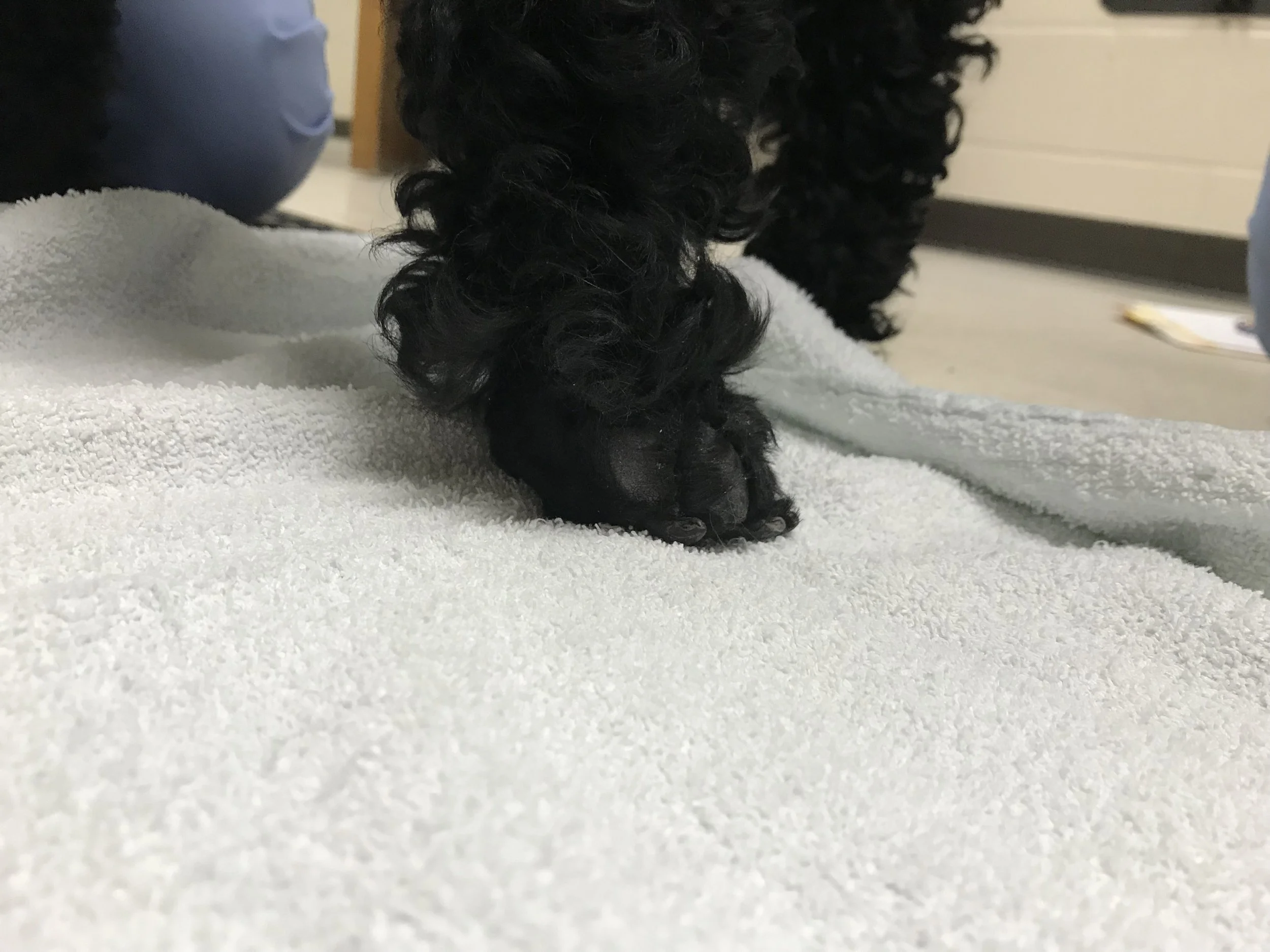Perhaps you’ve wondered what the difference is between ataxia and paresis? Perhaps you already know, in which case you can grab that cup of coffee and move on to your next email!
Still with me? Okay, here we go. Ataxia is the failure of coordination. This suggests a sensory abnormality and when noted, it is a hallmark for neurologic disease. As you’ll see in the next section, paresis can be noted with neurologic, orthopedic, neuromuscular or muscular conditions, making it much less specific. Ataxia, however, is a failure of neurologic sensory information which means it can only be noted with dysfunction of the neurologic system. There are three forms of ataxia: 1) proprioceptive, 2) vestibular and 3) cerebellar.
Proprioceptive ataxia is an indication of a spinal cord, brainstem or forebrain disease. Ataxia is not noted with neuromuscular disease. Signs of proprioceptive ataxia include a crossing of the limbs when walking down a straight pathway, or placing the limbs narrow and wide of the midline of the body without regularity.
Vestibular ataxia indicates dysfunction of the vestibular apparatus. When observing a patient with vestibular ataxia, the observer can appreciate a falling or drifting towards one side when walking. This can be especially magnified when the patient is turned in a circle.
Cerebellar ataxia occurs with disease or injury to the cerebellum. Signs of hypermetria, truncal sway, and a wide based stance with, or without intention tremor are indications of cerebellar ataxia.
Paresis, on the other hand, is a weak movement or incomplete paralysis. This involves most commonly UMN or LMN, but remember the neuromuscular junction, muscle and bones or joints can be a source of paresis also. A patient with mild paresis will exhibit a reduced joint range of motion when walking giving the appearance of shuffling. Severe paresis may be more profound so that an animal is unable to support weight even with purposeful limb movements.
Common terminology when describing paresis:
Mono: one limb (any)
Para: pelvic limbs (both)
Tetra: four limbs
How can you write the gait abnormality in the record?
If the pet has only a proprioceptive ataxia: Pet is exhibiting crossing of pelvic limbs, consistent with proprioceptive ataxia.
If the pet has proprioceptive ataxia AND paresis: Pet shows crossing of pelvic limbs and reduced joint ROM (or weakness /unable to rise/collapsing frequently) consistent with proprioceptive ataxia and paraparesis.
If the pet is non-ambulatory in the pelvic limbs (cannot walk without support): non-ambulatory paraparesis*
If the pet does not have any observable motor, even with support, in the pelvic limbs: paraplegia. *
*Comments about ataxia cannot be made once the pet is non-ambulatory or plegic.
Hopefully this helps clarify when to use paresis and ataxia when describing the gait. Enjoy your week and stay safe!

